There are many shrines in Japan named “Tōshōgū.”
Among them, the one located here in Nikkō is the most prestigious and is commonly referred to as “Nikkō Tōshōgū.”
This shrine enshrines Tokugawa Ieyasu, one of the most famous military leaders in Japanese history.
Unlike the solemn and understated atmosphere found in most Japanese shrines, Nikkō Tōshōgū stands out with richly gilded buildings and ornate decorations, vividly conveying the power of the Tokugawa shogunate.
How to Get There
How to Get to the Nearest Station
The nearest stations are Tōbu Nikkō Station and JR Nikkō Station.
For detailed directions to these stations, please refer to this article.
From the Station to Tōshōgū Shrine
Address: 2301 Sannai, Nikkō-shi, Tochigi Prefecture – Google Maps
There are two options to reach the shrine from the station: by bus or on foot.
If you walk, it takes about 20 to 30 minutes. If you have time, we recommend walking one way—either to or from the shrine.
By Bus The bus ride takes less than 10 minutes.
The bus ride takes less than 10 minutes.
Right outside Tōbu Nikkō Station, you’ll find a clearly marked bus stop—usually crowded with other visitors, so it’s easy to spot.
In the photo, you’ll see bus stops 2A, 2B, and 2C. You can take any of these to reach Tōshōgū.
The most convenient stops to get off are either Shinkyo (神橋) or Nishi-sandō Iriguchi (西参道入口).
Since many tourists head the same way, just following the crowd usually works fine.
On Foot It takes about 20 to 30 minutes to reach the entrance on foot.
It takes about 20 to 30 minutes to reach the entrance on foot.
From Tōbu Nikkō Station, the route to the shrine is a straight and easy walk.
Along the way, you’ll pass souvenir shops and restaurants, and even catch views of majestic mountains.
It’s a pleasant stroll that often feels shorter than expected.
What Is Nikkō Tōshōgū? Historical Background
Historical Background
Nikkō Tōshōgū was originally established in 1617, the year after Tokugawa Ieyasu passed away.
His son, the second shogun Tokugawa Hidetada, ordered the shrine built to enshrine Ieyasu as a deity.
After his death, Ieyasu was given the divine title Tōshō Daigongen (東照大権現), and his spirit was enshrined in the sacred grounds of Nikkō.
Later, under the direction of the third shogun, Tokugawa Iemitsu (Ieyasu’s grandson), the shrine underwent major renovations.
In 1636, the lavish and colorful structures seen today were completed in what is known as the Great Kan’ei Reconstruction (寛永の大造替).
The use of gold leaf and vivid color was highly unusual at the time, reflecting a level of luxury rarely seen in shrine architecture.
These ornate decorations were not simply for beauty.
They were a calculated expression of Tokugawa power—both to honor Ieyasu and to project the strength and stability of the shogunate to the public.
In short, Nikkō Tōshōgū is a shrine with over 400 years of history.
Among all the Tōshōgū shrines in Japan, it is the most prestigious.
In 1999, it was registered as part of the UNESCO World Heritage Site “Shrines and Temples of Nikkō.”
The Enshrined Deity
The main deity of Nikkō Tōshōgū is Tokugawa Ieyasu.
In Shinto, the “main enshrined deity” refers to the most important kami (god or spirit) honored at a shrine.
Tokugawa Ieyasu was the founding shogun of the Edo Shogunate and one of the most influential figures in Japanese history.
After his death, he was posthumously granted the divine title Tōshō Daigongen, and enshrined as a god.
He is revered as a deity who brings peace to the nation and safety to its people.
As a result, Nikkō Tōshōgū is widely respected as a “shrine of peace,” and many visitors come to draw inspiration from Ieyasu’s wisdom and leadership.
Notably, every shrine named “Tōshōgū” throughout Japan enshrines Tokugawa Ieyasu.
Among them, Nikkō Tōshōgū stands at the top in terms of status and serves as the spiritual head of all other Tōshōgū shrines.
How to Buy Tickets for Nikkō Tōshōgū
Tickets can be purchased either at the ticket window or online.
There are two types of tickets available:
-
A single ticket for Tōshōgū Shrine only
-
A combination ticket that includes both Tōshōgū Shrine and the Treasure Hall (Hōmotsukan)
Buying Tickets at the Ticket Window
・At the Entrance to Tōshōgū Shrine
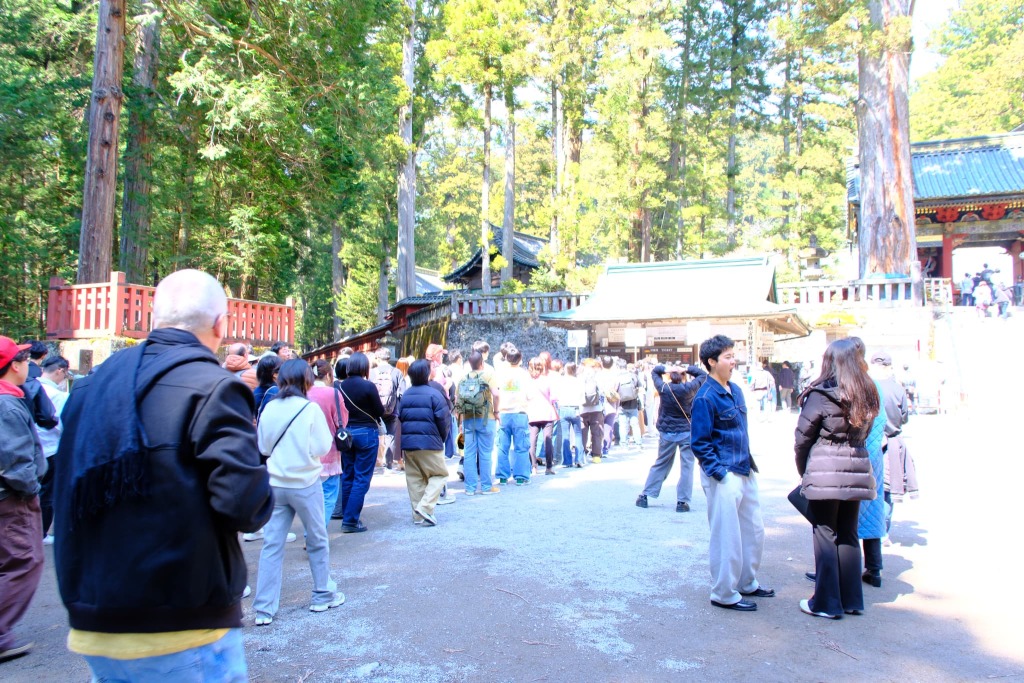 It tends to be quite crowded.
It tends to be quite crowded.
The ticket counter is located right at the entrance to Tōshōgū Shrine, making it very easy to find.
Since many people are lining up, it’s unlikely you’ll miss it, and you can purchase your ticket with confidence.
Tickets can be purchased at counters ① to ⑥.
Please note that counter ⑦ is not available for ticket sales.
・At the Treasure Hall (Hōmotsukan) There is a separate building called the Treasure Hall, where donated offerings and historical artifacts are displayed.
There is a separate building called the Treasure Hall, where donated offerings and historical artifacts are displayed.
At this building, you can purchase a combination ticket (Tōshōgū Shrine + Treasure Hall).
However, single tickets for Tōshōgū Shrine only are not sold here.
On the plus side, it’s usually much less crowded, so you can purchase your ticket more smoothly.
Buying Tickets Online
・Official Website
https://www.toshogu.jp/
On the official website, click on “Click for tickets” to proceed.
You will be redirected to a booking service page run by kkday.
After purchasing online, you will need to exchange your voucher for a physical ticket on-site.
Among the multiple ticket counters, counter ⑦—where almost no one is waiting—is designated for ticket exchanges.
・Other Online Services
In our case, we purchased tickets via Trip.com.
Other online services may also offer tickets, but regardless of the platform, you will still need to exchange your voucher for a physical ticket at the site.
One important thing to note: the location where you exchange your voucher may vary.
For Trip.com, the exchange location was at the tourist information center inside Tōbu Nikkō Station.
Since we mistakenly purchased tickets while standing in front of the shrine’s ticket booth, we had to go all the way back to Tōbu Nikkō Station to exchange them.
Please make sure to carefully check the exchange instructions after purchasing tickets online!
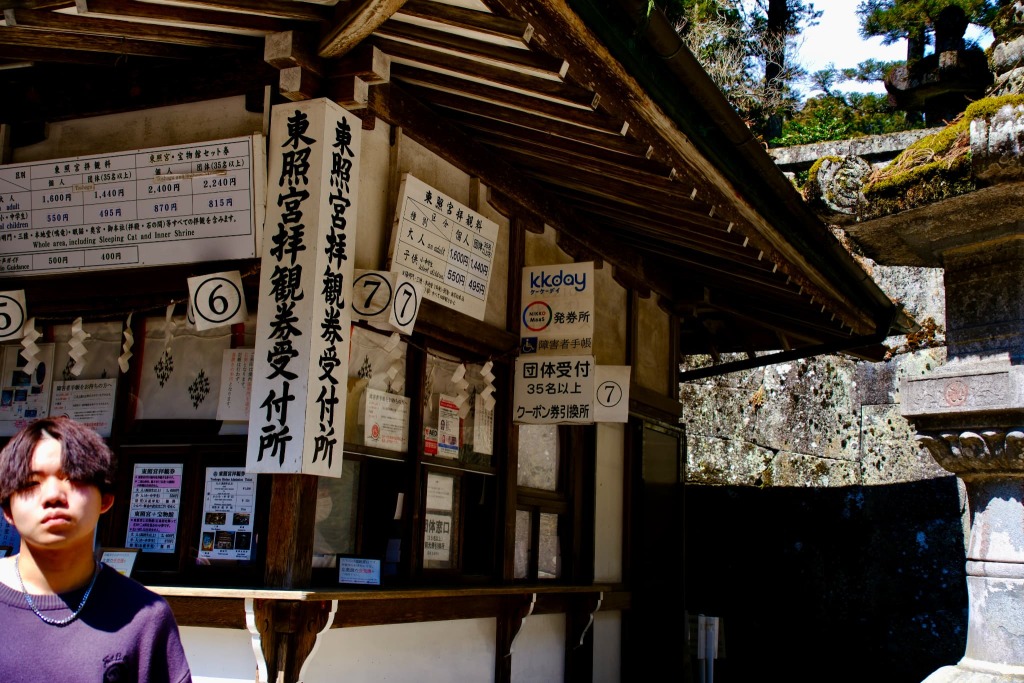 The mostly empty counter ⑦ for ticket exchanges.
The mostly empty counter ⑦ for ticket exchanges.
What’s Inside Nikkō Tōshōgū?
Compared to the vast shrines of Ise, such as the Gekū and Naikū, Nikkō Tōshōgū may not feel particularly large.
However, since you can enter some of the buildings and admire their intricate decorations up close, you may find yourself spending much more time here than expected.

Around 10:30 a.m. on a Saturday, the parking lot was nearly full.
We recommend using public transportation.
Alternatively, parking near Tōbu Nikkō Station and walking to the shrine is another good option.
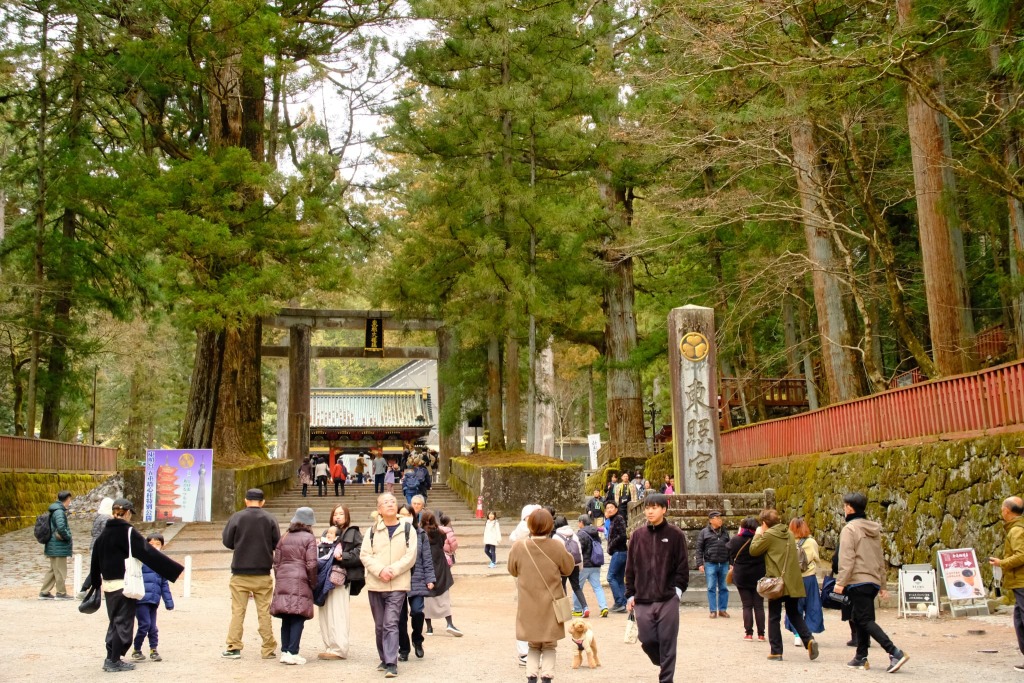 Pass through this torii gate to reach the ticket booth.
Pass through this torii gate to reach the ticket booth.
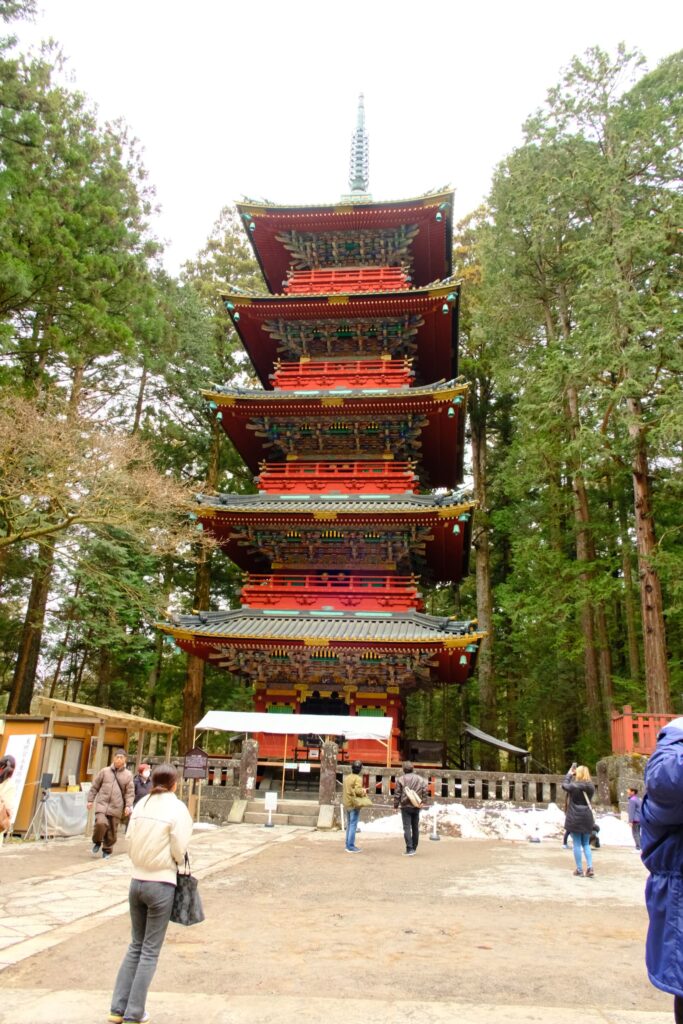 This five-story pagoda stands just before the ticket counter.
This five-story pagoda stands just before the ticket counter.
Its intricate carvings are impressive.
You can enter the pagoda with a separate ticket, which can be purchased right next to it.
Admission is 300 yen per adult.
Tickets here are usually available without waiting in line.
 Pass through the gate guarded by two fierce Niō statues.
Pass through the gate guarded by two fierce Niō statues.
Show your paper ticket to the staff here.
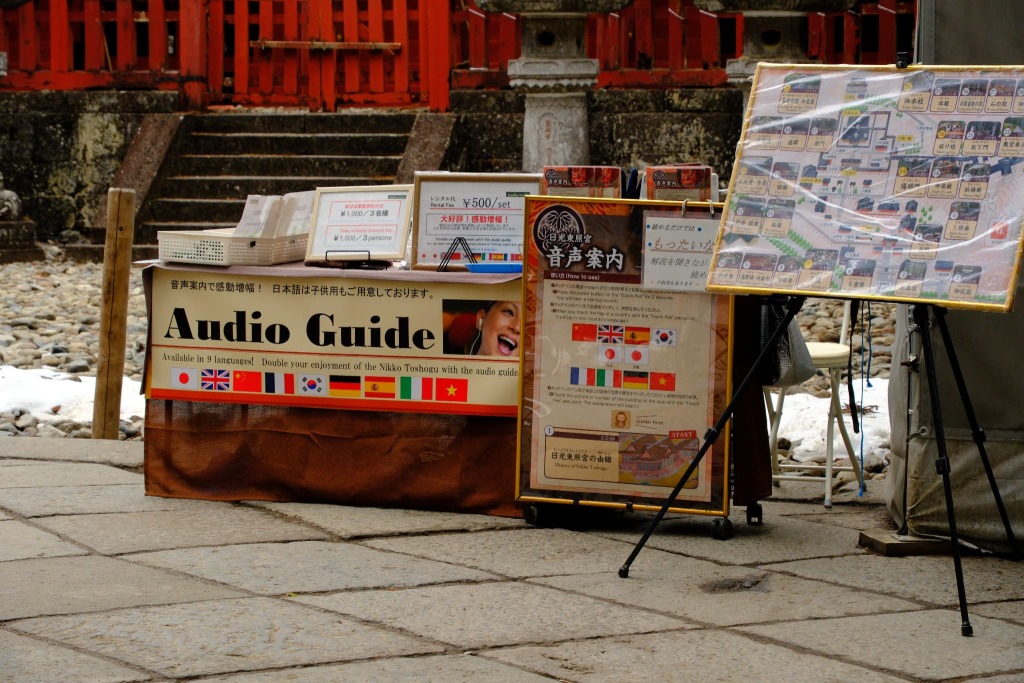 Just after the entrance, you’ll find audio guides available for rent for 500 yen.
Just after the entrance, you’ll find audio guides available for rent for 500 yen.
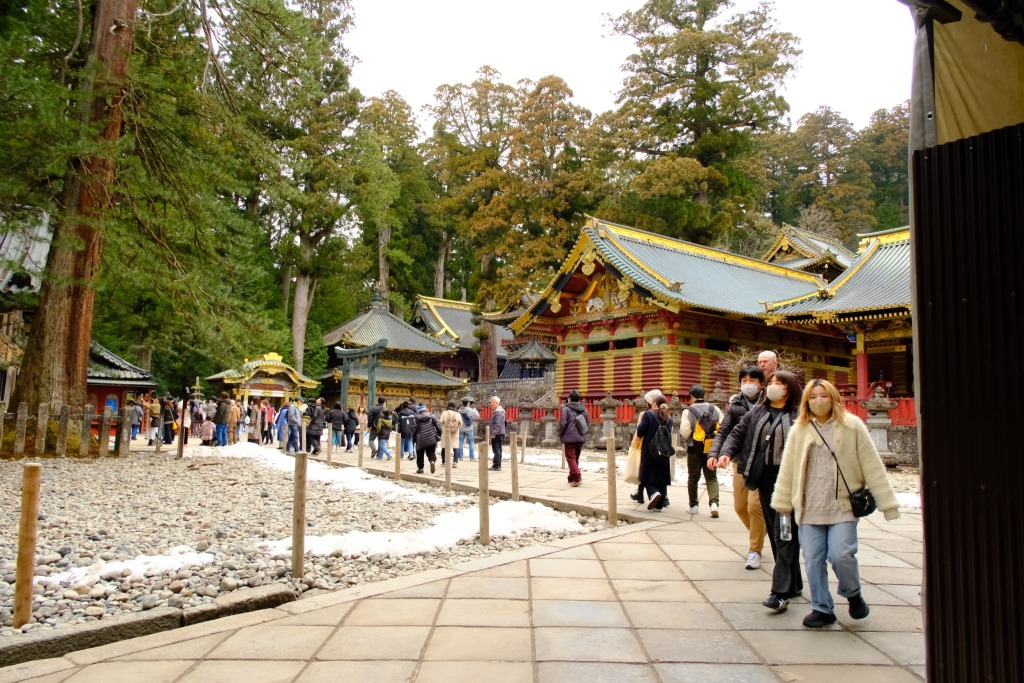 You’ll immediately notice buildings richly decorated with gold.
You’ll immediately notice buildings richly decorated with gold.
It’s a moment that clearly sets this shrine apart from typical Japanese shrines.
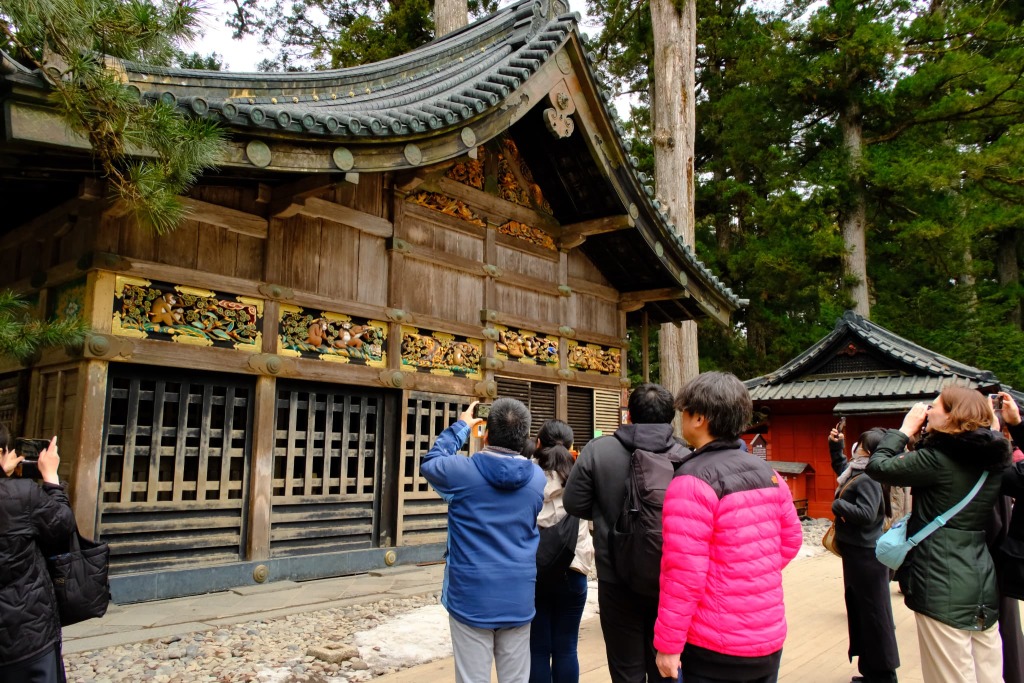
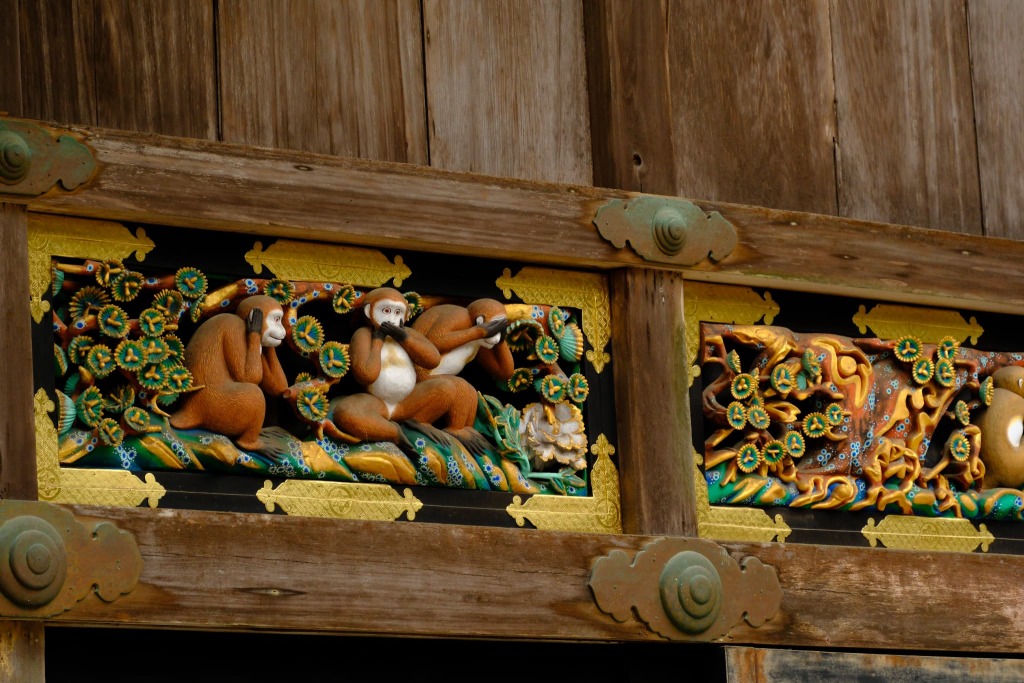 Here are the famous “Three Wise Monkeys” (Mizaru, Kikazaru, Iwazaru).
Here are the famous “Three Wise Monkeys” (Mizaru, Kikazaru, Iwazaru).
They are very well known in Japan.
The carving depicts the phrase “See no evil, hear no evil, speak no evil.”
In Japan, this is seen as a moral teaching, particularly for children, promoting a virtuous and pure lifestyle.
While the concept is also known overseas as “See no evil, hear no evil, speak no evil,”
it is sometimes interpreted cynically in modern contexts—as ignoring inconvenient truths.
At Nikkō Tōshōgū, however, the monkeys symbolize a positive lesson:
a wish to protect the innocence of children and promote peaceful living—deeply rooted in traditional Japanese values.
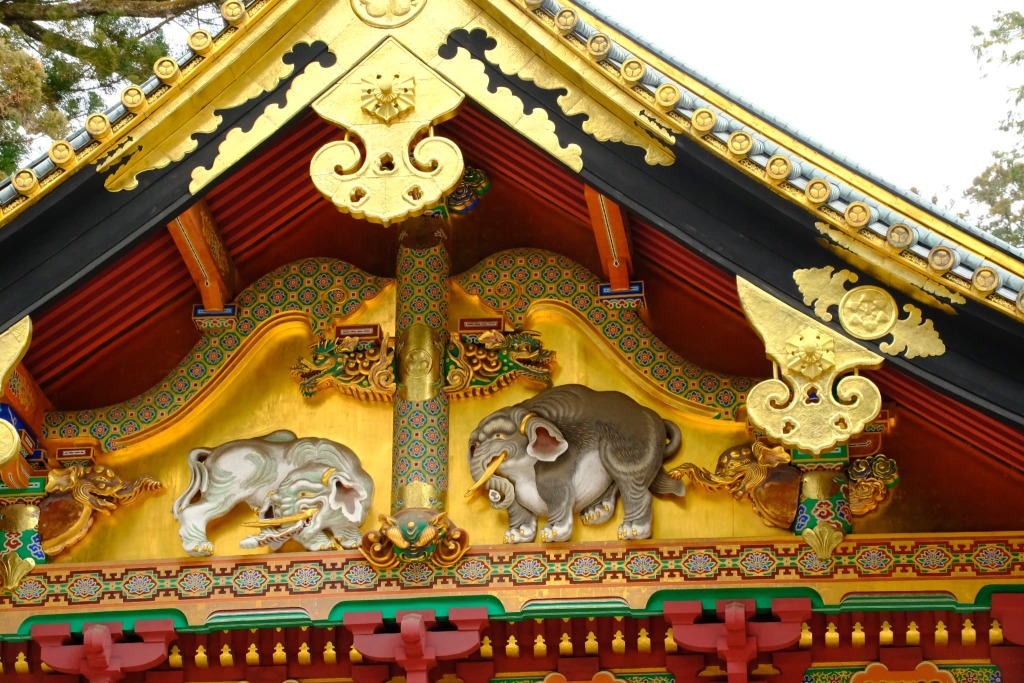
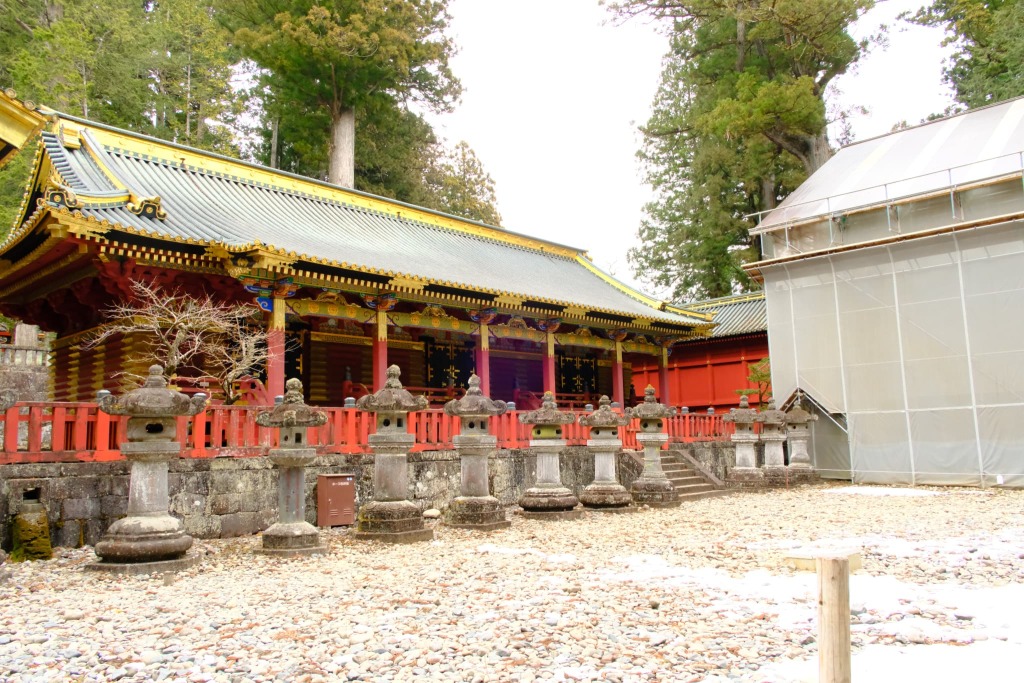
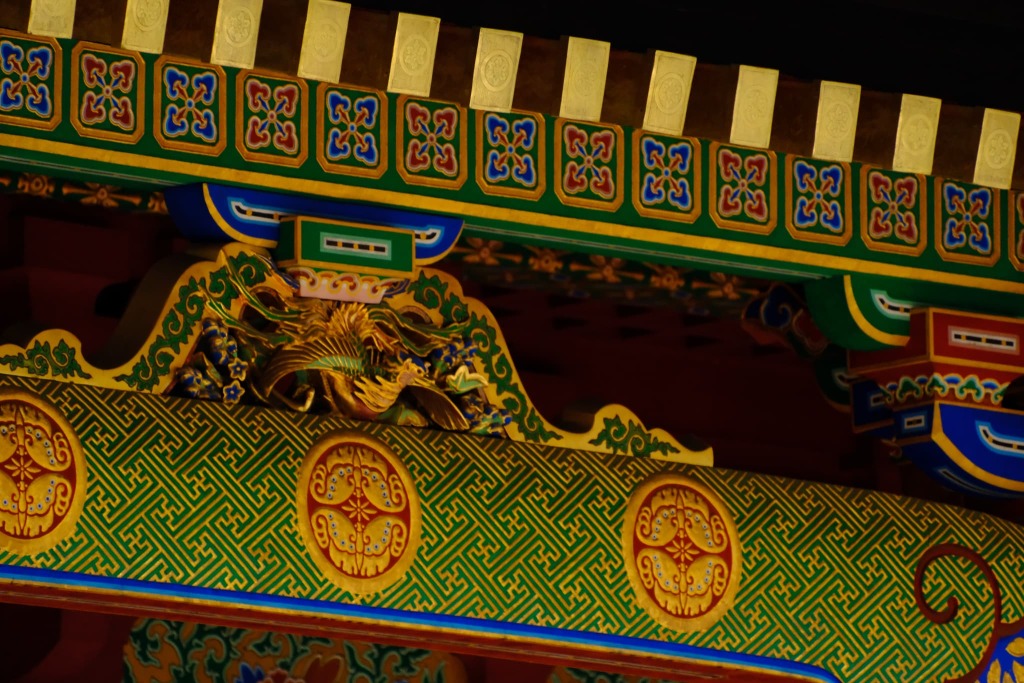 You’ll encounter beautiful decorations throughout the site.
You’ll encounter beautiful decorations throughout the site.
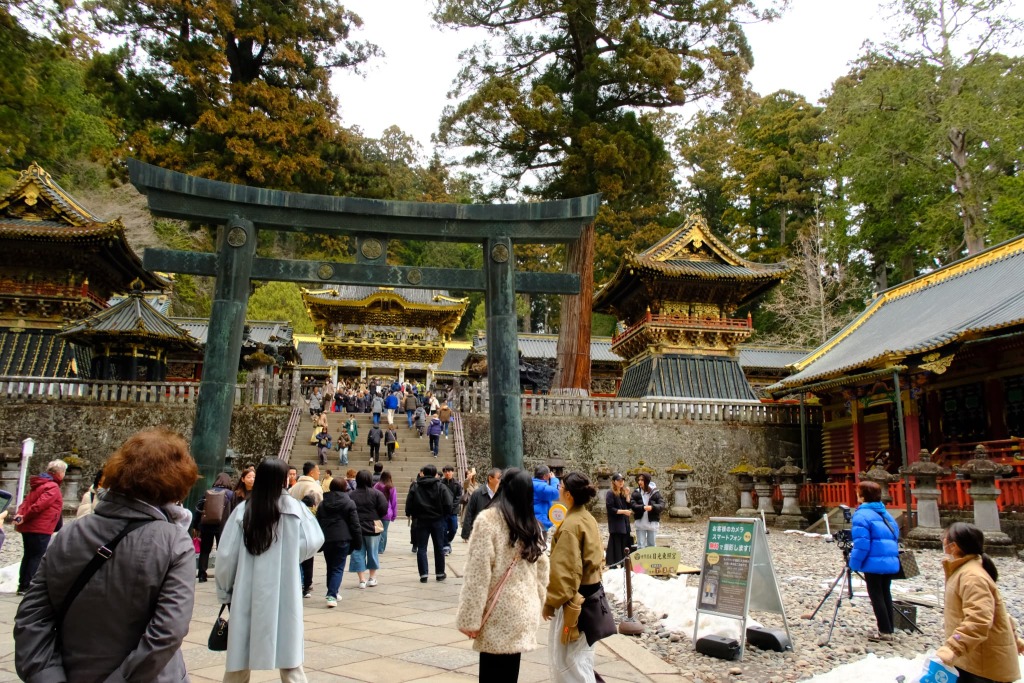 The building behind this torii gate shines even more brilliantly with gold—on another level entirely.
The building behind this torii gate shines even more brilliantly with gold—on another level entirely.
This is Yōmeimon Gate, one of the most iconic parts of Nikkō Tōshōgū.
Just beyond this gate lies the Okumiya, where Tokugawa Ieyasu’s mausoleum is located.
The design of this gate is intentionally more elaborate than other structures—
meant to showcase the power of the Tokugawa family and of Ieyasu himself.
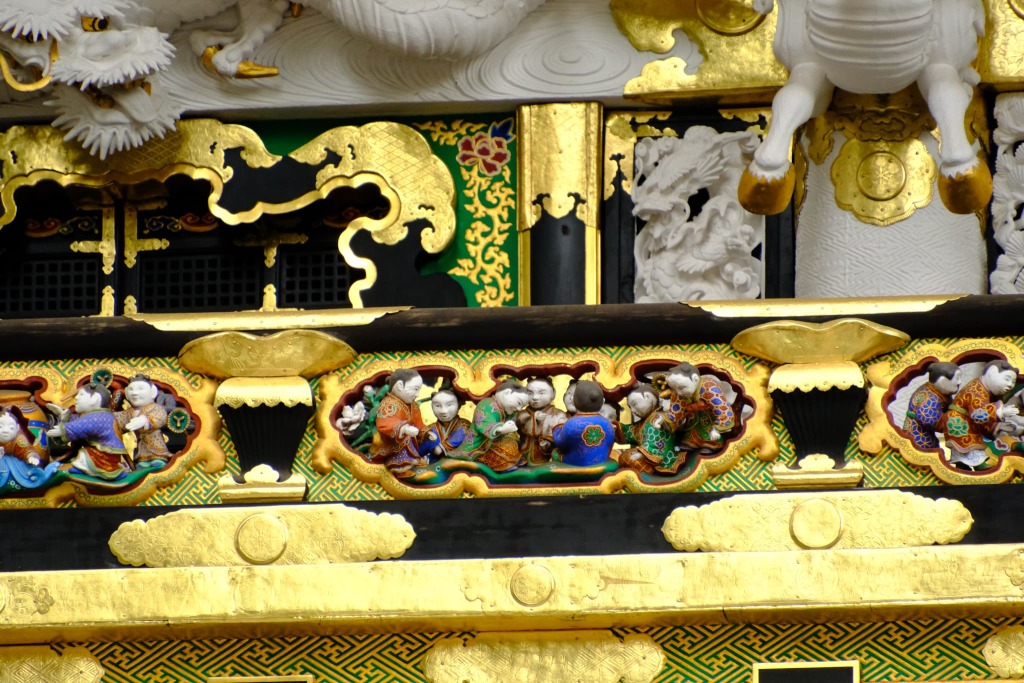 Yōmeimon’s carvings are astonishingly intricate.
Yōmeimon’s carvings are astonishingly intricate.
Even the walls surrounding it are richly adorned.
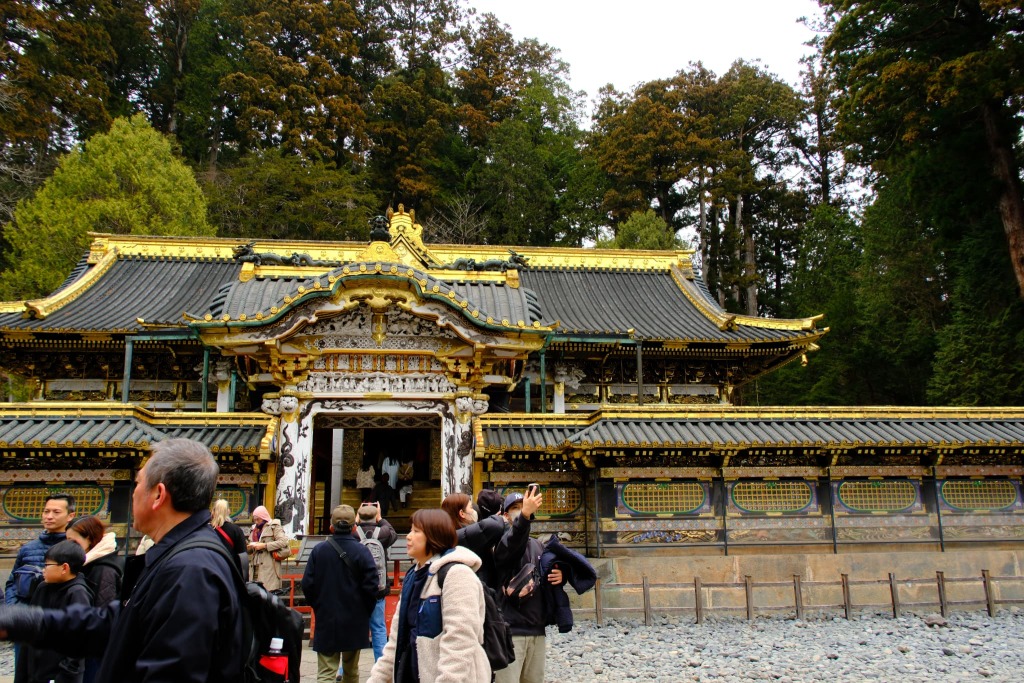
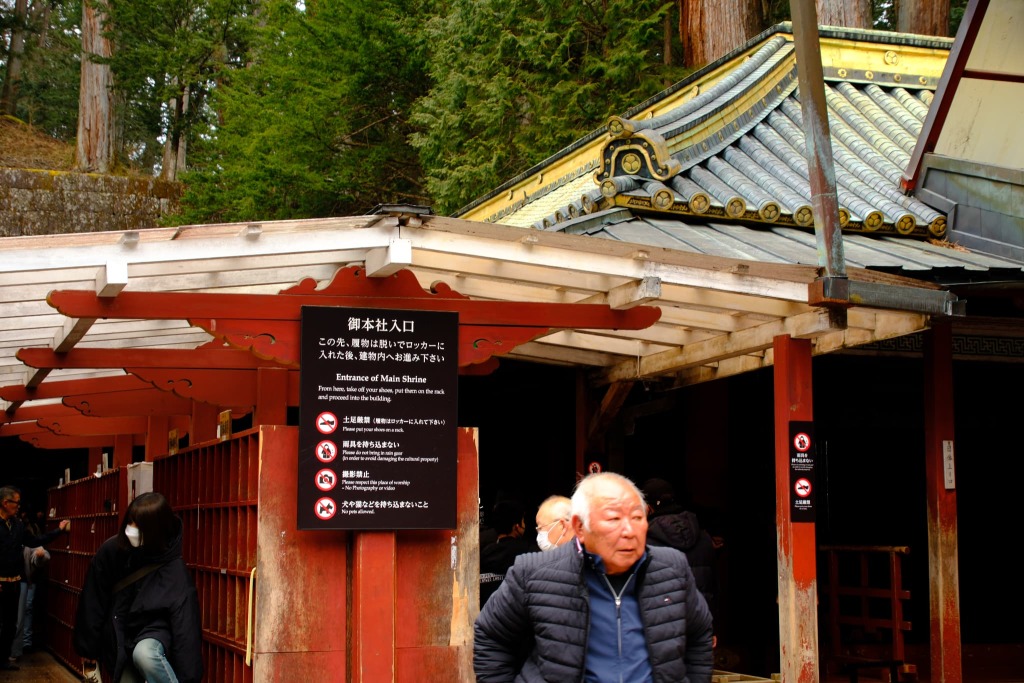 Directly ahead is the Main Hall (Gohondō / 御本社).
Directly ahead is the Main Hall (Gohondō / 御本社).
Remove your shoes and place them in the lockers before entering.
Please note that photography is prohibited inside.
 As you pass through Yōmeimon and head toward the Okumiya on the right,
As you pass through Yōmeimon and head toward the Okumiya on the right,
look up above the corridor—you’ll spot a small cat carving.
This is the famous “Nemuri Neko” (Sleeping Cat),
said to be the work of master artisan Hidari Jingorō.
It’s said that in peaceful times, even a cat can safely fall asleep—
a symbol of the tranquility brought by Ieyasu’s rule.
This carving is one of the shrine’s most cherished symbols.
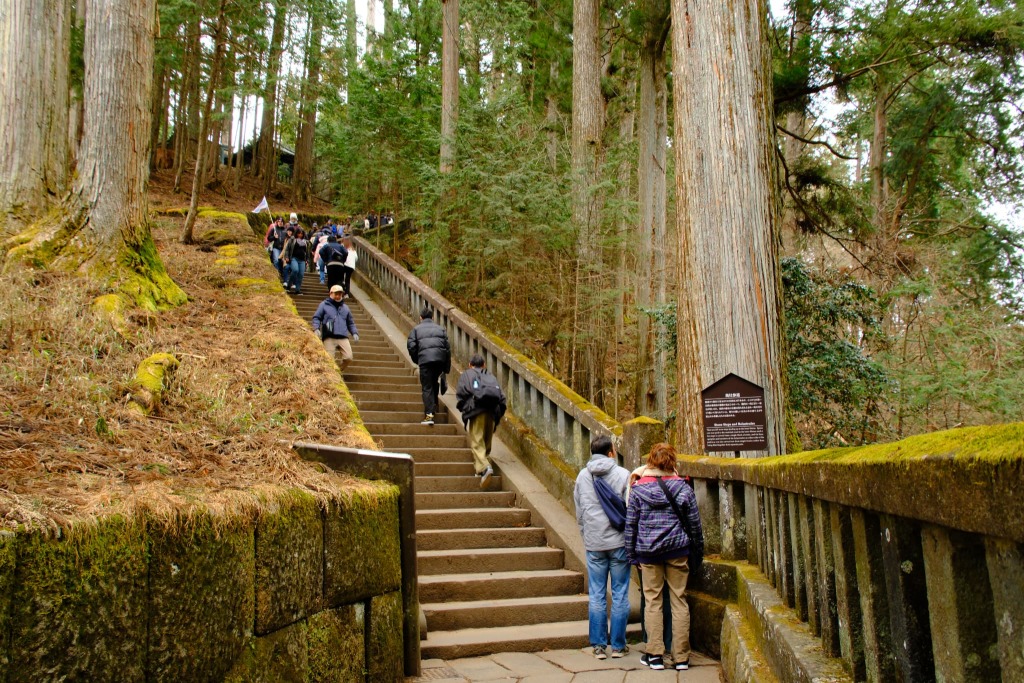 This staircase leads to the Okumiya.
This staircase leads to the Okumiya.
From here, the atmosphere shifts into one of quiet reverence, like that of a traditional shrine.
The Okumiya area is more subdued, with restrained decoration.
This is the most sacred space in Nikkō Tōshōgū, where the spirit of Tokugawa Ieyasu is believed to reside.
It invites visitors to reflect and show deep respect in a space of solemn tranquility.
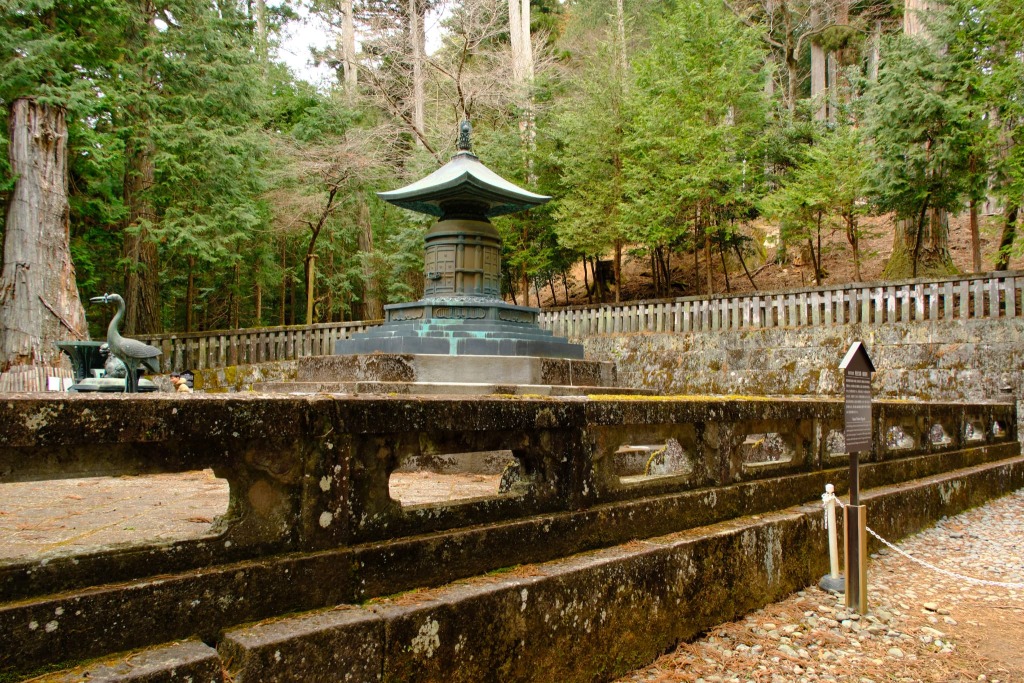
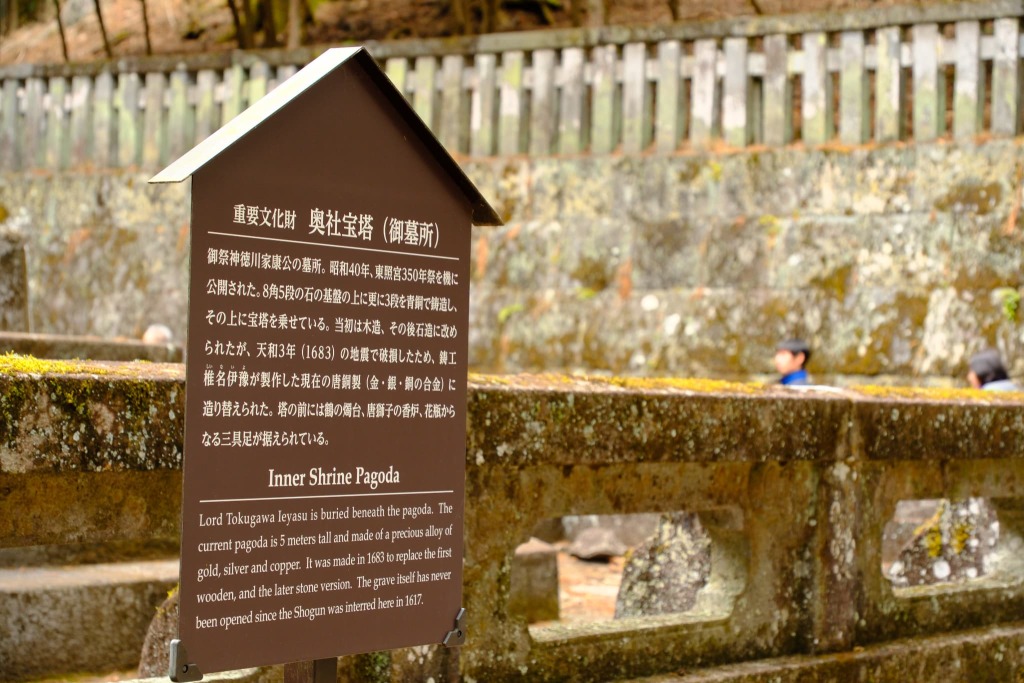 This is the Okumiya.
This is the Okumiya.
Truly a sacred and awe-inspiring place.
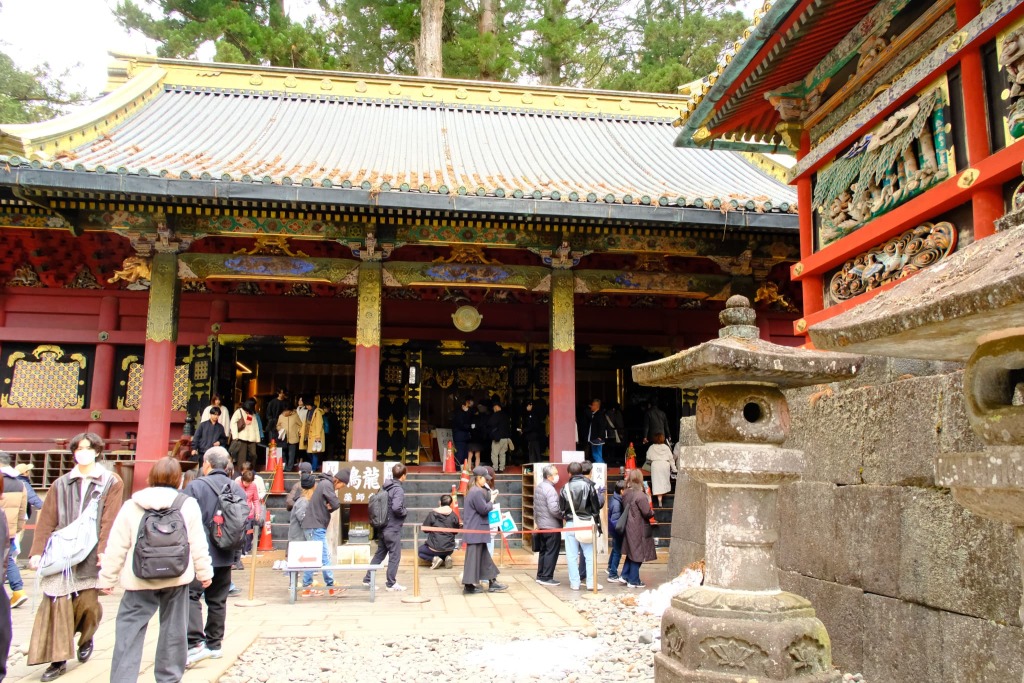 After visiting the Okumiya, turn right just past Yōmeimon and you’ll find a hall called Yakushidō.
After visiting the Okumiya, turn right just past Yōmeimon and you’ll find a hall called Yakushidō.
Its official name is Honjidō.
It’s famous for a phenomenon known as the “Crying Dragon” (Nakiryu).
Photography is prohibited inside, so only exterior photos are allowed.
Inside, a guide will strike wooden clappers directly beneath the painted dragon on the ceiling.
When struck under the dragon’s head, the sound reverberates with a sharp, ringing echo.
In any other spot, the echo disappears.
※ A ticket is required to enter Yakushidō.
The ticket you purchased for Tōshōgū includes admission to this hall—so don’t throw it away!
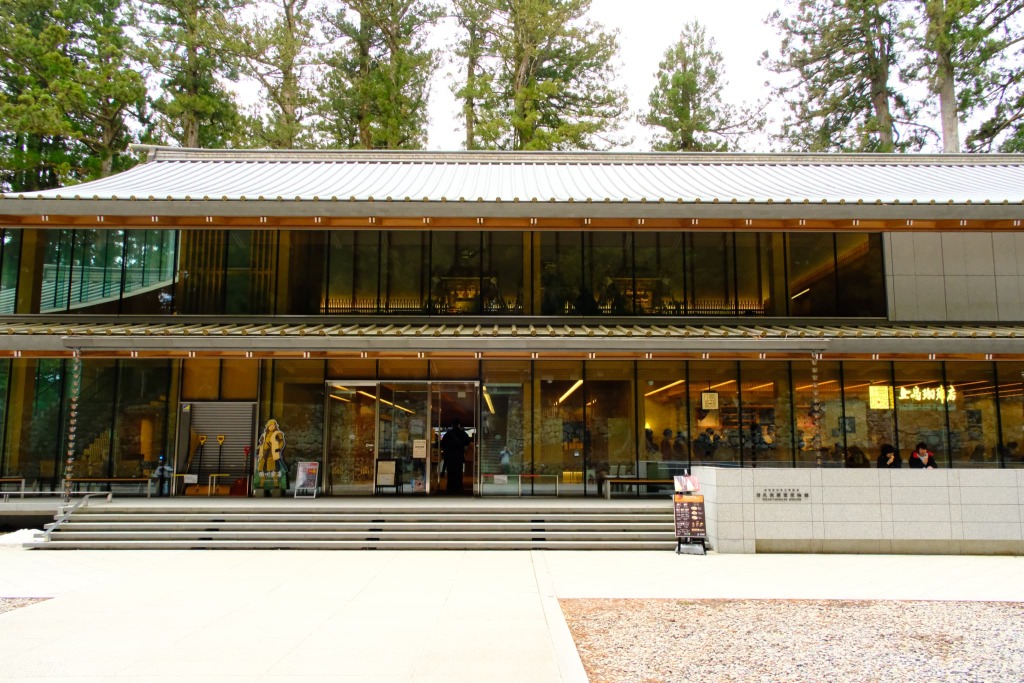 This is the Tōshōgū Treasure Hall (Hōmotsukan).
This is the Tōshōgū Treasure Hall (Hōmotsukan).
Entry is only available to those who purchase a separate ticket or a combination ticket.
Photography is prohibited inside after a certain point.
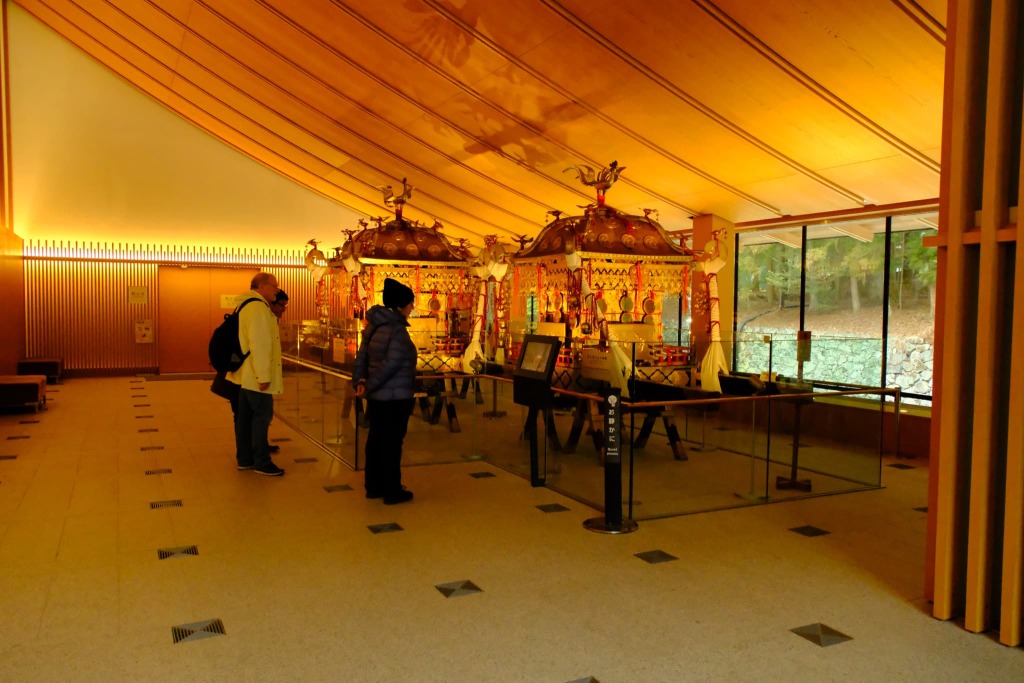 This photo was taken just before the “no photography” area.
This photo was taken just before the “no photography” area.
Displayed here is a gorgeous, gold-covered portable shrine (mikoshi).
You can tour the Treasure Hall in about 30 minutes.
Hours and Admission
Tōshōgū Shrine & Treasure Hall
Hours of Operation:
-
April 1 – October 31: 9:00 AM to 5:00 PM
-
November 1 – March 31: 9:00 AM to 4:00 PM
Ticket Prices:
-
Tōshōgū Shrine + Treasure Hall Combination Ticket
Adults: ¥2,400 / Children (elementary & junior high): ¥870 -
Tōshōgū Shrine Only Ticket
Adults: ¥1,600 / Children: ¥550 -
Treasure Hall Only Ticket
Adults: ¥1,000 / Children: ¥400
Note: This article contains information as of March 23, 2025.
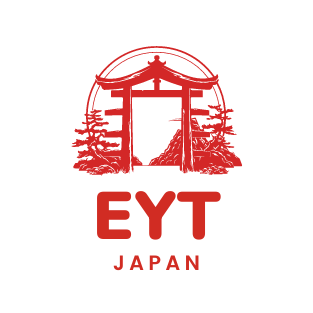
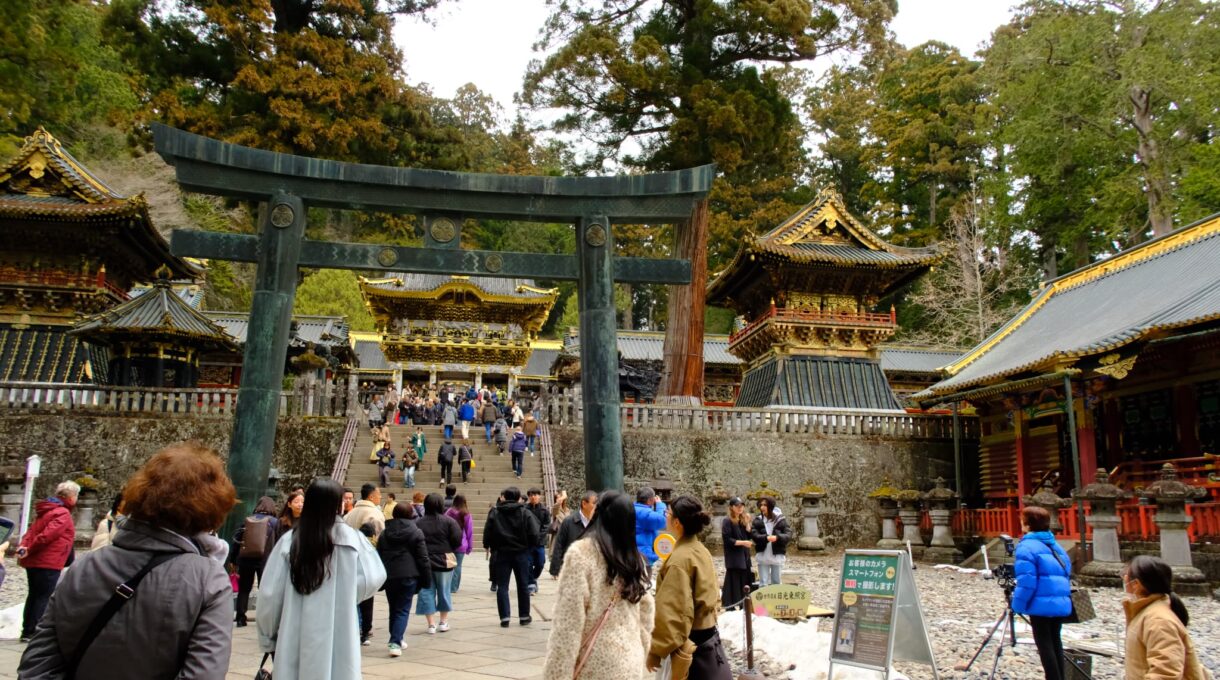
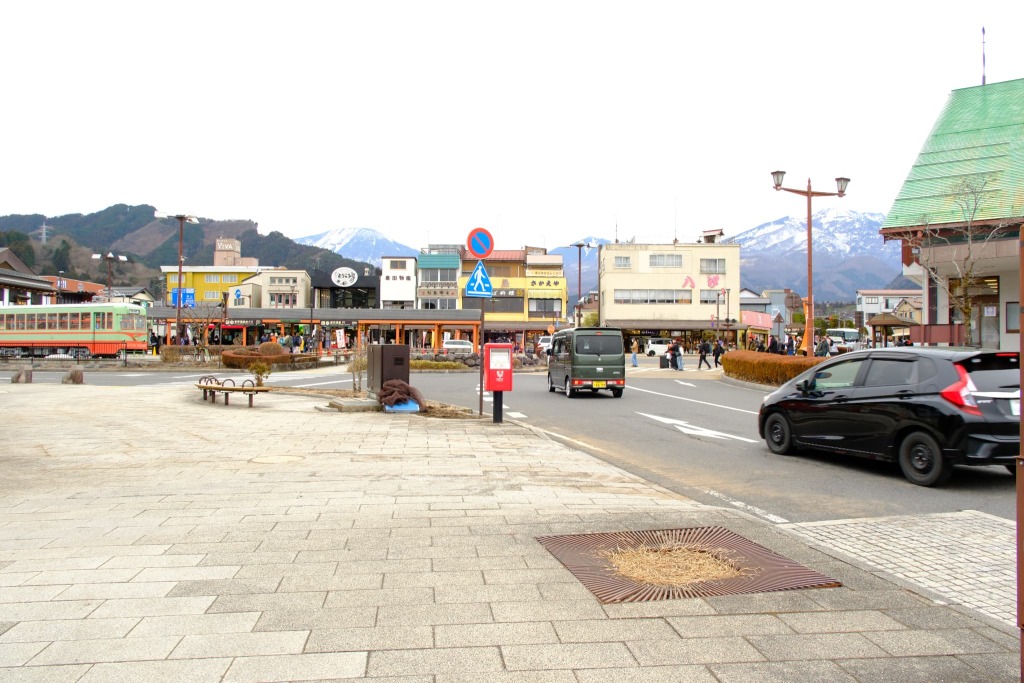
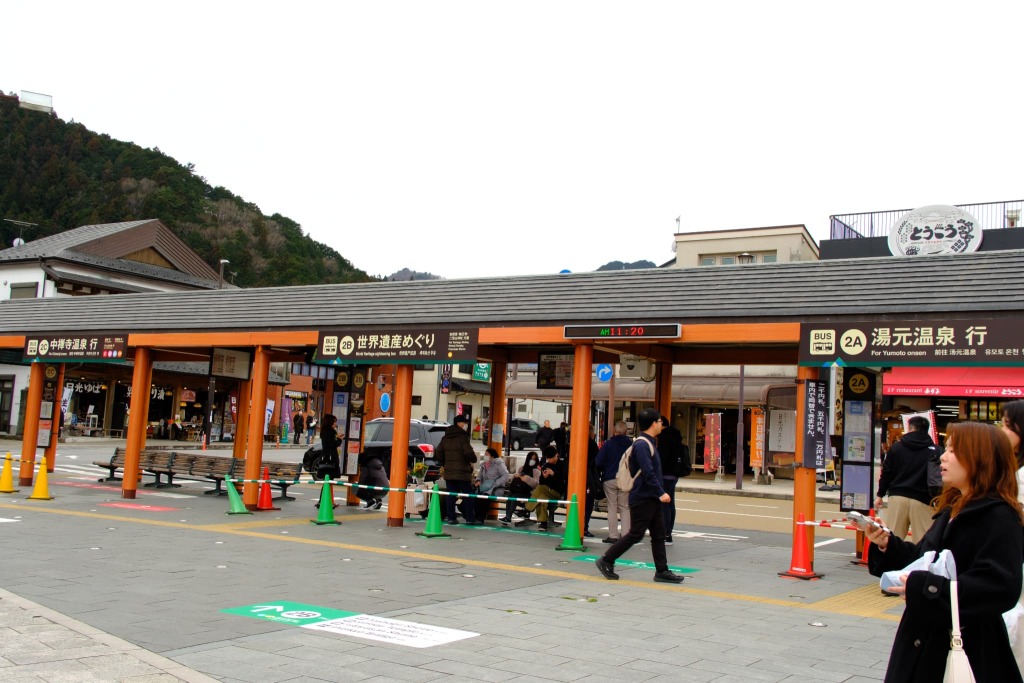 The bus ride takes less than 10 minutes.
The bus ride takes less than 10 minutes.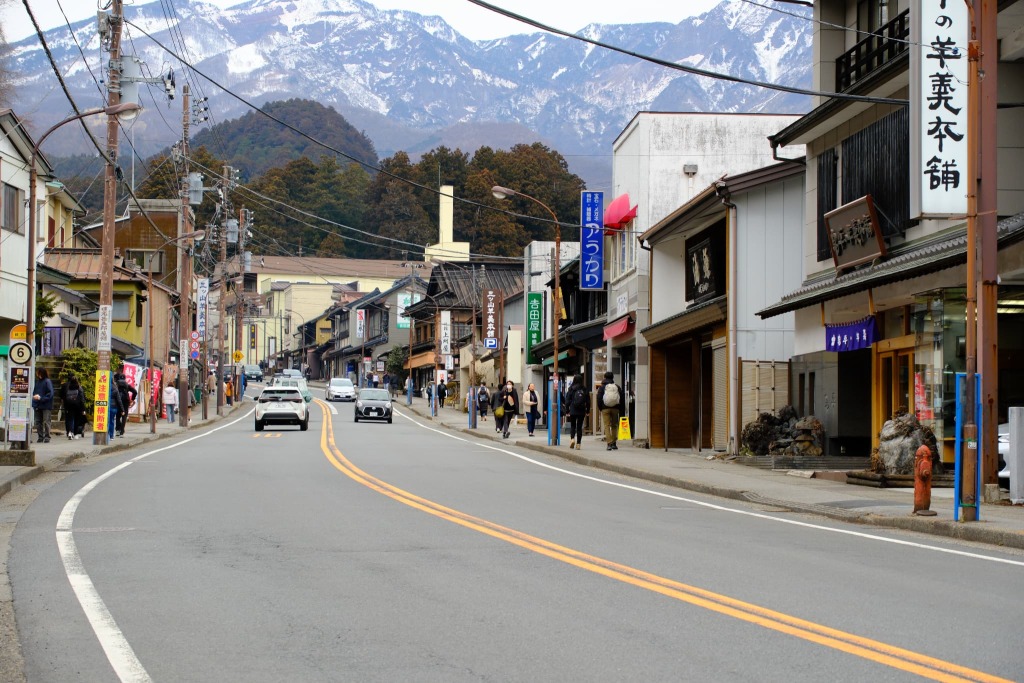 It takes about 20 to 30 minutes to reach the entrance on foot.
It takes about 20 to 30 minutes to reach the entrance on foot. Historical Background
Historical Background